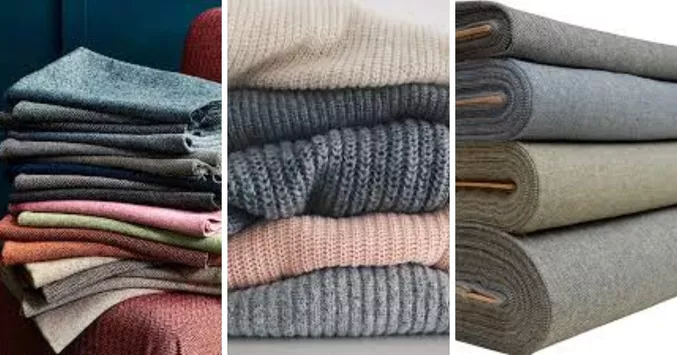What is wool fabric? Where does it come from and what types of wool fabrics are commonly used? Wool is a versatile fabric used for sweaters, accessories, furniture, and is second only to cotton in popularity. Refer to the article below from Fashion Bandung to learn more about wool fabric.
What is wool fabric? Where does wool fabric come from?
Wool fabric is a type of fabric that is created by weaving or knitting wool fibers together. These fibers are obtained from the hair of animals such as sheep, goats, and camels. Wool is a natural material composed of proteins derived from keratin, which is responsible for giving the fabric its unique elasticity and durability.
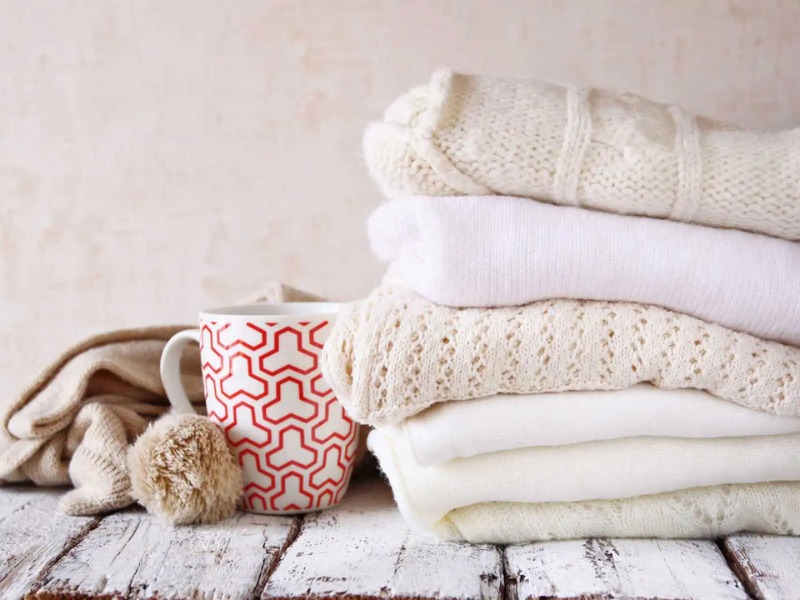
Wool fabric is highly sought after due to its exceptional qualities of being soft to the touch and providing excellent warmth.
Wool is a type of fabric that is known for its softness and ability to retain heat well. This makes it a popular choice for making sweaters, jackets, scarves, and other winter products. Wool provides warmth and comfort in cold weather, making it ideal for keeping the body insulated and protected from the elements. Its natural fibers have the ability to trap air and create a layer of insulation, which helps to regulate body temperature and prevent heat loss. Additionally, wool has a luxurious feel and is often chosen for its aesthetic appeal, as it can be woven into various patterns and textures. Overall, wool is a versatile and reliable material that is valued for its warmth, softness, and excellent heat retention properties.
Approximately 10,000 years ago, during the time when humans began to domesticate sheep, there was a noticeable change in the amount of hair on their bodies. It is believed that as early as 8,000 years ago, people started creating garments from wool. However, the earliest tangible evidence of this practice dates back to around 4,000 BC. As time passed, the production of woolen cloth gained significant importance and by the year 1200 AD, it had become a crucial sector of the Italian economy.
Pros and cons of using wool fabric.
Advantages of wool fabric
Despite growing concerns about the environment and ecology, wool fabric continues to meet the demands of consumers due to its various appealing qualities. Wool is not only beautiful but also holds several distinct advantages over other fibers. Firstly, wool is sourced from renewable resources, making it a sustainable choice. Additionally, wool is biodegradable, ensuring that it does not contribute to the accumulation of waste in landfills. Furthermore, wool possesses unique properties that set it apart from other materials, such as excellent insulation, breathability, and moisture-wicking capabilities. These characteristics make wool an ideal choice for garments and textiles, providing comfort and functionality to consumers. Despite the increasing awareness of environmental issues, the enduring popularity of wool fabric can be attributed to its renewable nature, biodegradability, and unmatched properties.
- Environmental friendliness: Wool is biodegradable after a few years, it comes from nature and returns to nature, enriching the soil.
- Durable: Wool fibers can stretch up to 50% when wet and 30% when dry but still return to their original shape when released.
- Breathable and absorbent: Wool has high moisture absorption capacity, does not cause a feeling of dampness or cold.
- Insulation: Wool helps keep you warm in cold weather and cool in hot weather due to its inherent insulating properties. Due to its ability to absorb moisture, wool fabric maintains dryness and warmth when worn.
- Easy to clean: The surface of wool fibers has a natural coating that naturally repels dirt. In addition, wool fabrics do not conduct electricity like synthetic fabrics, so they attract less dust.
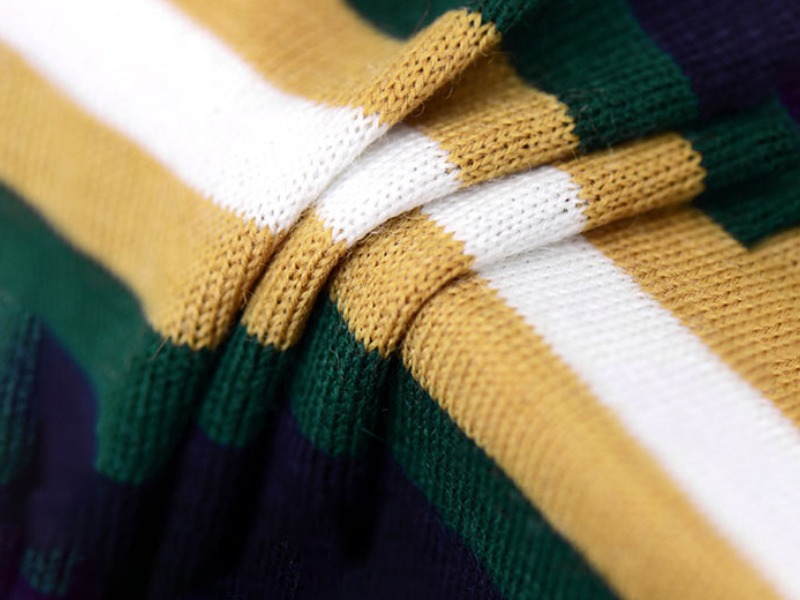
There are numerous advantages that make wool fabric highly popular among a wide range of people.
Disadvantages of wool fabric
Even though wool fabric is widely recognized for its numerous benefits, it also possesses a few drawbacks that should be taken into consideration.
- Slow to dry, prone to mold: Wool is a thicker fabric than other fabrics, so when washed normally it will take a long time to dry, especially in humid conditions, it can cause mold and damage to the fabric.
- May cause skin irritation: Wool is not usually irritating to the skin, but in some cases sensitive skin may be irritated by contact due to the wool source. This can lead to redness, itching or irritation of the skin.
- High price: Compared to other fabrics, wool is more expensive. This can be a barrier for some people when they want to buy wool products.
- Limited stretch ability: Although wool fabric is naturally elastic, its ability to stretch is limited. This can make the wearer of wool clothing feel limited in flexibility and comfort when moving.
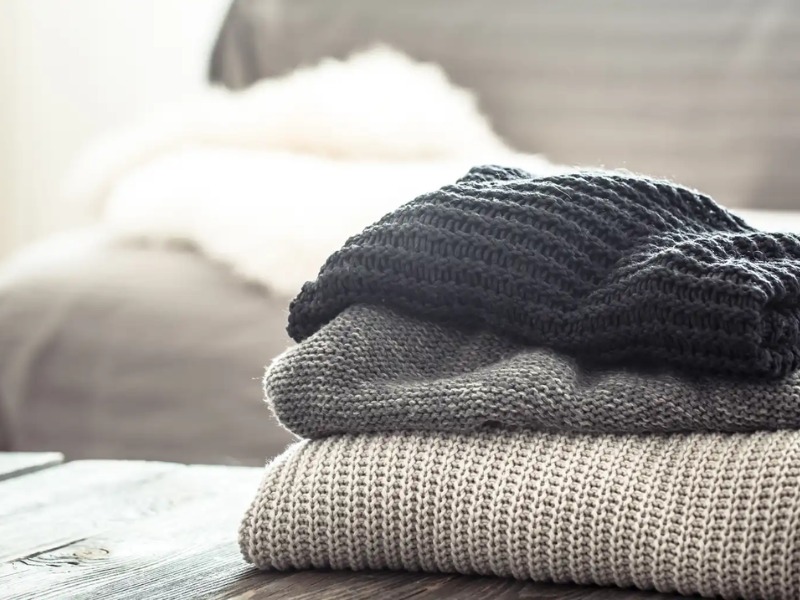
Wool fabric is known for its high cost and is considered to be a luxury material due to its expensive nature.
Today, wool fabrics are widely used and popular in various forms.
Wool fabrics can be categorized into numerous groups based on their origin. Among the most popular types that are widely used today include:
Merino wool fabric
Merino wool is a natural fiber that is derived from the wool of Merino sheep. Originally found in Spain, this breed of sheep was later introduced to South America, South Africa, and Australia. The wool obtained from Merino sheep is known for its fine quality, with a diameter of less than 20 microns. This thin diameter allows the wool to be bent over 20,000 times without breaking.
Before the wool can be used, it undergoes a processing stage. Initially, the wool is removed from the sheep, and it is found to be covered in a greasy substance. This greasy residue, known as lanolin, needs to be eliminated from the wool before it can be spun into yarn. This cleaning process is essential to obtain the smooth, soft, and clean Merino wool that is highly coveted in the textile industry.
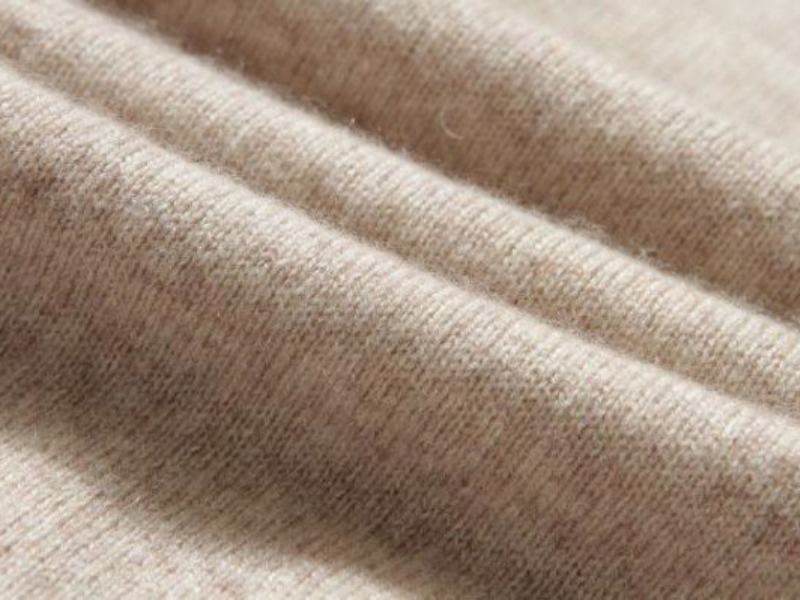
The process of obtaining wool involves sourcing it from the fleece of soft and fine Merino sheep.
Merino wool, known for its elasticity, can be transformed into various products that conform to the body while retaining their warmth and shape. The majority of Merino sheep wool is utilized in the production of diverse clothing items as well as industrial materials.
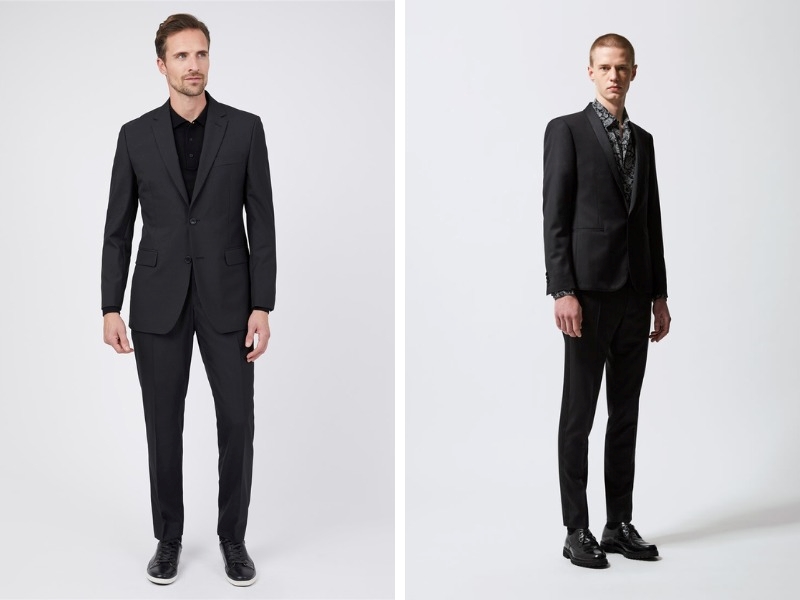
A merino wool jacket is a type of garment made from the soft and luxurious wool produced by merino sheep. Merino wool is renowned for its exceptional insulating properties, as well as its ability to regulate body temperature, making it perfect for creating warm and cozy jackets. The jacket is typically designed to be stylish and versatile, suitable for various weather conditions and occasions. The merino wool jacket combines both functionality and fashion, providing warmth, comfort, and a touch of sophistication to the wearer.
Today, numerous renowned fashion brands rely on Merino wool to create their winter suits. For instance, one such brand is Drapers from Italy, which utilizes this high-quality wool to manufacture its suit collection. In addition to Drapers, Sensorial is another brand that frequently incorporates Merino wool into their trouser designs. Furthermore, Dolce & Taylor also recognizes the exceptional qualities of Merino wool and often selects it as the ideal material for their suits and jackets.
Cashmere fabric
Cashmere is a highly sought-after and opulent type of wool fabric that comes from the harsh climate of Kashmir, India. It is considered to be one of the lightest wool fabrics available. The fiber used in cashmere comes from the soft and downy hair of Cashmere goats, which are typically less than a year old. Skilled craftsmen meticulously hand-pick the hair to ensure that it does not harm the goat’s body. This labor-intensive process contributes to the high cost and exclusivity of cashmere products.
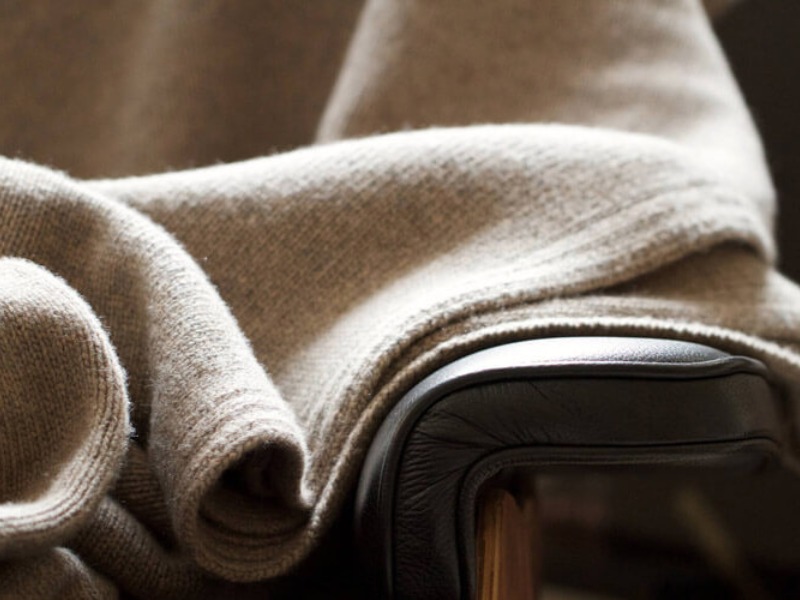
Cashmere wool is a luxurious and sought-after material that is derived from the soft and fine hair of goats. These goats possess a unique undercoat of downy hair, which is carefully collected and processed to create the exceptionally soft and warm cashmere wool. This natural fiber is highly valued in the textile industry due to its superior quality and desirable properties, such as insulation, breathability, and durability. Harvesting cashmere wool involves a meticulous and delicate process, as the hair is typically collected through combing or shearing the goats during their annual molting season. The resulting cashmere wool is then carefully cleaned, sorted, and processed to remove any impurities and ensure a premium end product. Due to its rarity and luxurious qualities, cashmere wool is often associated with high-end fashion and is considered a prized material for creating exquisite clothing, accessories, and home furnishings.
Cashmere wool is incredibly fine, with a diameter as small as 18 microns. It has a luxurious texture that is soft, light, and smooth to the touch. The origins of this wool can be traced to regions where the climate undergoes constant fluctuations throughout the day. Remarkably, cashmere wool has the unique ability to provide warmth in cold weather and keep you cool in hotter temperatures. Due to its exceptional qualities, cashmere wool is considered a premium material and comes with a higher price tag. Additionally, the production of cashmere wool can only meet a small fraction of the global demand, making it even more coveted and sought after.
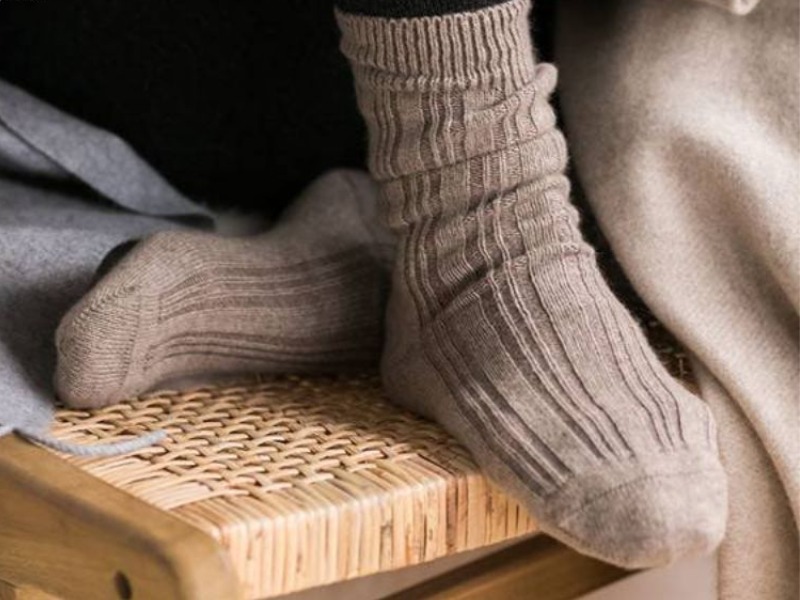
Stockings constructed using a delicate and airy fabric known as Cashmere.
The fabric used to make these clothes is specifically designed for thin sweaters, lightweight winter clothing, scarves, gloves, socks, and other winter accessories. It has excellent insulation properties that help to keep the wearer warm during the winter season. Uniqlo is a well-known brand that frequently utilizes this fabric, which is why their clothing items are often praised for being extremely lightweight yet still providing ample warmth.
Alpaca wool fabric
Alpaca wool is highly acclaimed by renowned designers like Giorgio Max Loro Piana, Mara, and Armani for its exceptional qualities. This fabric is cherished for its unparalleled softness and smoothness, surpassing even that of sheep wool. Moreover, it boasts an impressive durability that is seven times greater than traditional sheep wool. Additionally, alpaca wool possesses excellent heat retention properties, making it a sought-after choice in the fashion industry.
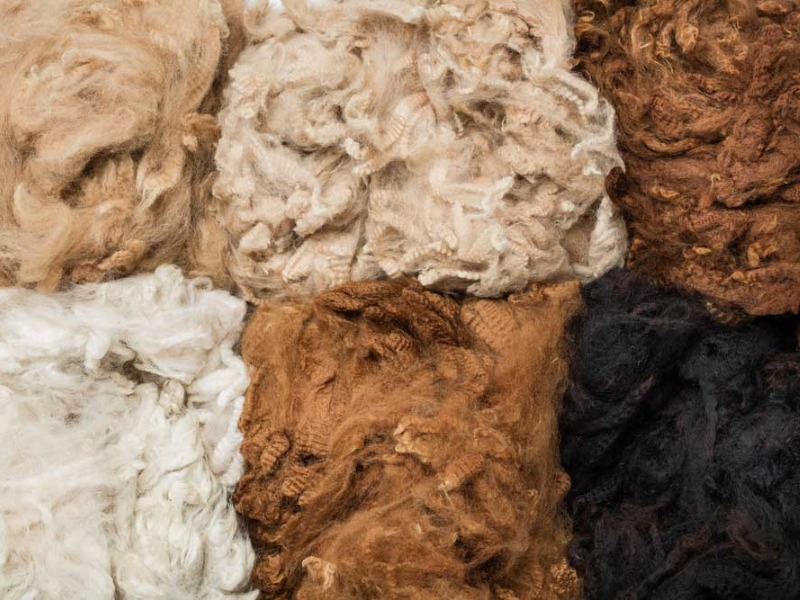
The hair of alpacas has a small diameter, however, it tends to become coarse as it gets older.
Alpaca wool fabric is obtained from the fibres of Alpaca camels. These animals typically yield only 5 kg of wool per year, making this fabric exceptionally scarce. Consequently, only a limited number of brands incorporate this rare material into their products.
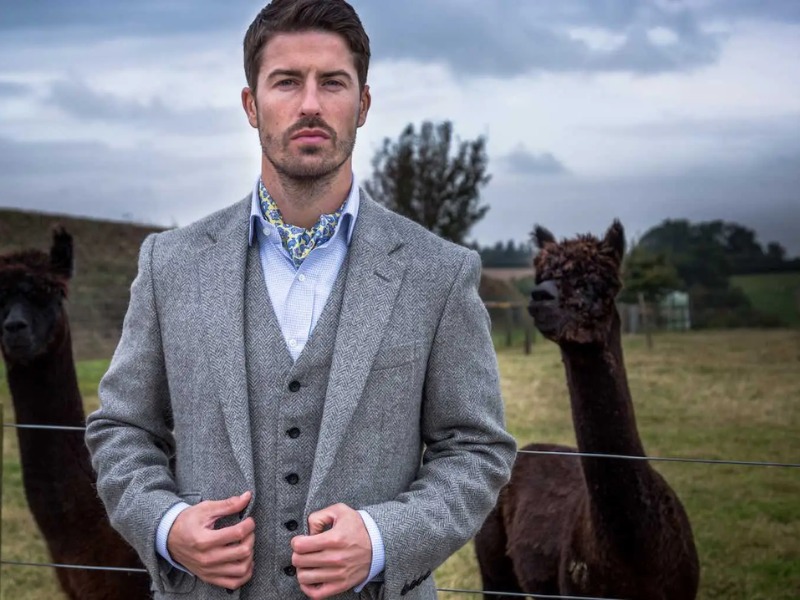
Wyvern Tailoring specializes in creating bespoke suits made from luxurious Alpaca wool. Our expert tailors meticulously handcraft each suit to our clients’ exact measurements and preferences. By using Alpaca wool, known for its exceptional softness, durability, and warmth, we ensure that our customers receive a suit of the highest quality. Whether it’s for a special occasion or daily wear, our Alpaca wool suits offer unparalleled comfort and style.
This specific type of wool fabric is utilized by various brands to create a range of clothing items such as sweaters, suits, and elegant coats. Well-known brands that incorporate this fabric into their designs include Lacoste, Valentino, and Wyvern Tailoring, among others.
Camel wool fabric
In the early 20th century, clothing made from camel wool gained popularity. Camel wool is known for its good insulation properties, although it is not as durable as other types of wool. Many brands utilize camel wool to create robes, scarves, and even carpets due to its exceptional resistance to water.
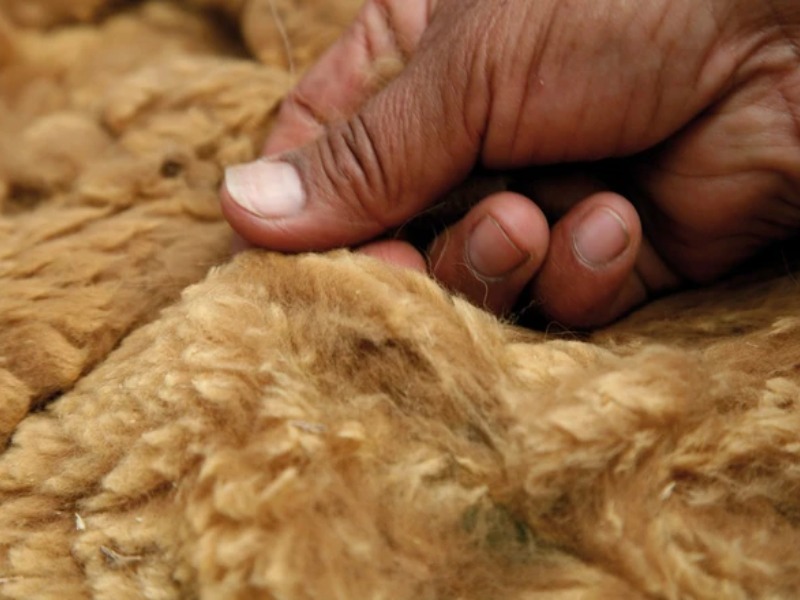
Camel wool is known for its excellent insulation properties, which allows it to provide effective thermal regulation in various weather conditions. This natural fiber has a unique ability to trap air within its fibers, creating a layer of insulation that helps keep the body warm in cold climates and cool in hot climates. The structure of camel wool also allows it to retain heat even when it is wet, making it a reliable choice for outdoor activities or unpredictable weather conditions. Additionally, camel wool is highly breathable, allowing moisture to evaporate and preventing overheating. Its insulation properties make it a popular choice for making warm clothing, blankets, and other textiles.
Virgin Wool Fabric
Virgin wool, also referred to as sheep’s wool, is derived from the initial shearing of sheep’s wool. This type of wool fabric is highly esteemed for its remarkable softness, smooth texture, and exceptional elasticity. Moreover, virgin wool is frequently subjected to the process of hand-dyeing, which results in the creation of an extensive range of vivid and long-lasting colors.
Virgin wool is a type of fabric made from the wool of a sheep that has never been used or processed before. It is known for its lightweight texture and softness. This makes it an ideal choice for making scarves, sweaters, socks, hats, gloves, and other winter accessories. Virgin wool provides warmth and insulation while being breathable and comfortable to wear. Its natural properties make it resistant to odors and wrinkles, making it a durable and long-lasting fabric option for clothing and accessories.
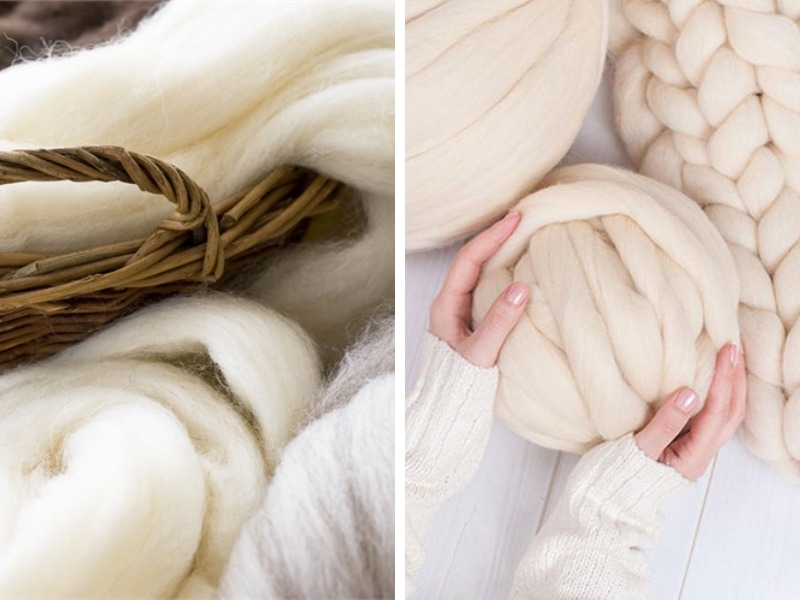
Virgin wool is a type of wool that is derived from the initial shearing of a sheep’s fleece. It is obtained from the sheep’s first wool growth and has not been previously processed or used for any other purpose.
Angora wool fabric
Angora wool is produced from the fur of Angora rabbits. It differs from traditional sheep wool in that it is fluffier in texture but lacks durability. To enhance its strength, other fibers and wool are often blended during the production process. It is worth noting that rabbit wool constitutes only a small portion of the overall wool supply market.

Angora wool is known for its inherent fluffiness, which adds a soft and voluminous texture to garments. However, despite this desirable quality, angora wool is not considered to be sufficiently durable for long-term use or frequent wear.
This particular fabric possesses excellent heat retention properties and is highly resistant to water. These qualities make it a popular choice for crafting various items such as sweaters, gloves, hats, bed sheets, and accessories, among others.
Vicuna wool fabric
Vicuna wool, known for its exorbitant price, is considered one of the most expensive types of wool worldwide. Owning a suit made from this luxurious material can cost up to $50,000. This valuable wool comes from the vicuna, a close relative of the Alpaca, and is native to Peru. In fact, the vicuna is even recognized as the national animal of Peru.
As a result of the Peruvian government’s policy to safeguard the endangered species, the production of this particular type of wool is constrained. Consequently, it is unable to fully meet the existing consumer demand.
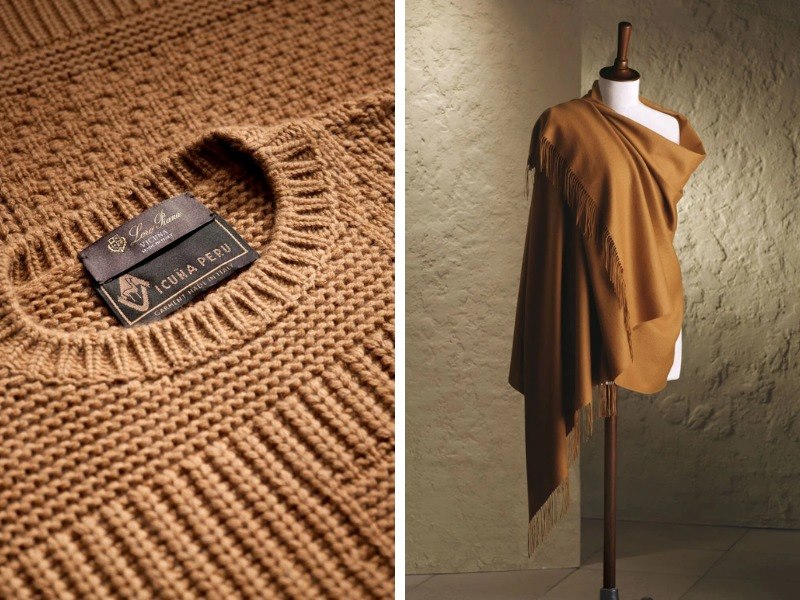
Vicuna wool is renowned for being one of the most luxurious and costly types of wool available on the market.
Qiviut wool fabric
Qiviut wool, derived from the coarse hair of musk oxen, is a high-quality wool known for its exceptional insulation properties. In fact, it offers eight times more insulation than traditional sheep’s wool. Due to its superior insulation capabilities, Qiviut wool is an excellent choice for crafting cold-weather clothing items such as hats, gloves, and other garments designed to keep individuals warm in chilly conditions.
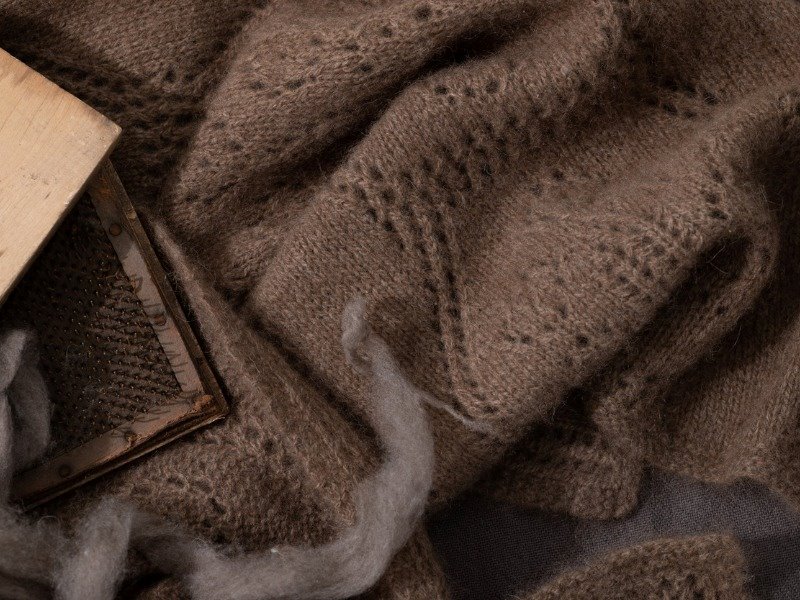
Qiviut wool fabric is known for its exceptional ability to provide high insulation. Due to its unique properties, it is able to effectively trap and retain heat, keeping the wearer warm even in cold weather conditions. This insulation capacity is much greater compared to other types of wool or synthetic fabrics. Qiviut wool fabric is highly sought after for its superior thermal efficiency, making it a popular choice for those seeking optimal warmth and comfort.
Fashion uses wool fabrics for various applications.
In the garment industry, wool is a crucial material that cannot be ignored due to its significant role in producing heat-retaining products for people of all ages. This natural fiber is particularly noteworthy for two exceptional products:
Clothes
Cotton wool fabric is a versatile material that is commonly used in the production of various types of warm clothing for people of all ages. It is particularly popular for making garments such as pants, shirts, skirts, and more.
When it comes to sweaters that come into direct contact with the skin, soft and smooth wool fabrics are preferred. These materials provide a cozy, comfortable feel against the wearer’s body.
On the other hand, for outerwear like coats or vests, coarser wool fabrics are often chosen. These fabrics offer more durability and insulation, making them suitable for colder weather conditions.
Overall, cotton wool fabric offers a wide range of options for creating stylish and comfortable clothing that caters to different needs and preferences.
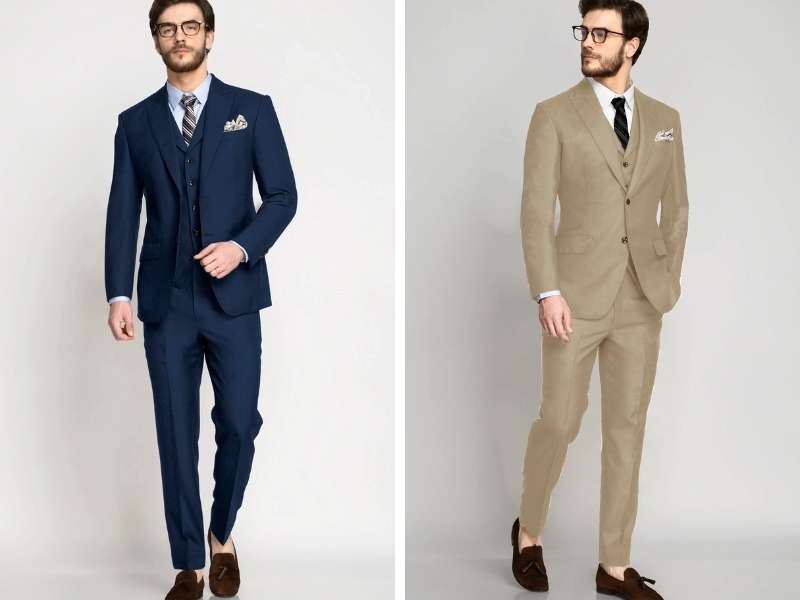
The wool fabric, known for its versatility and durability, is extensively utilized in the garment industry. It is a highly sought-after material due to its ability to provide warmth, comfort, and style in various clothing items. From cozy sweaters and jackets to elegant suits and dresses, wool fabric is a popular choice among designers and manufacturers for creating fashionable and functional clothing. Its natural insulating properties make it ideal for cold weather garments, while its breathability ensures comfort in different climates. With its wide availability, diverse range of colors and textures, and ability to be woven into different patterns, wool fabric remains a staple in the fashion industry.
Accessory
In the accessories manufacturing industry, wool is a highly significant material that cannot be overlooked. It is commonly used to create classic items such as scarves, woolen hats, socks, and gloves. Moreover, in certain countries, wool fabric is even utilized to produce accessories specifically designed for firefighters and individuals working in professions that have a higher risk of fire and explosion.
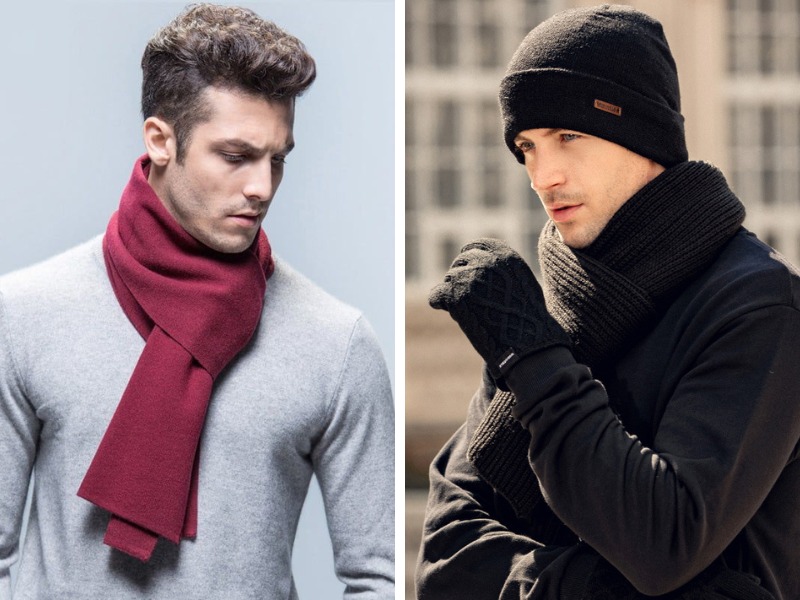
There is a wide range of accessories that are manufactured using wool fabric.
Various uses of wool fabrics in everyday life include clothing, blankets, rugs, and upholstery for furniture.
Wool, apart from its primary purpose of providing warmth to the body, finds extensive use in the creation of various consumer products to cater to diverse preferences.
Interior
In the present era, a significant number of carpets, insulation materials, and electrical items are manufactured using low-quality wool. On the other hand, medium-quality wool is frequently utilized in the production of various items such as sofa covers, curtains, blankets, cushions, curtain covers, pillows, and more.
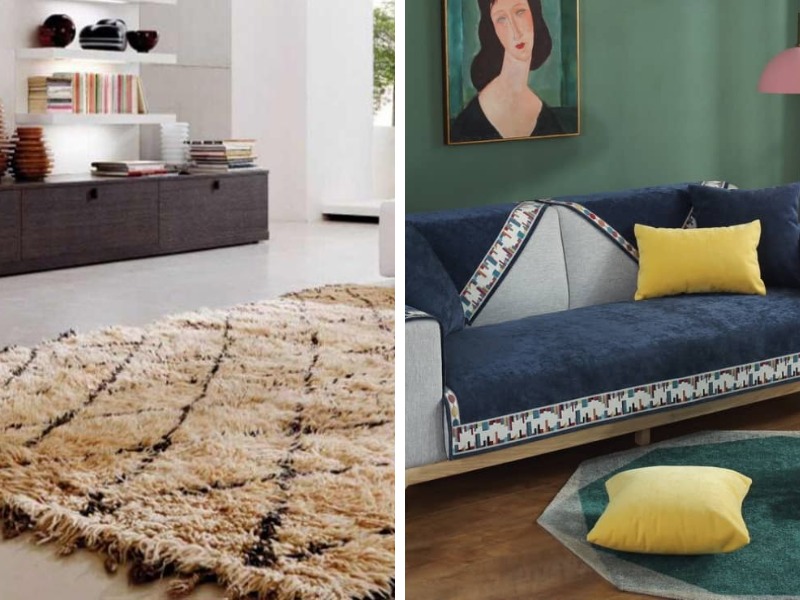
Carpet flooring is typically manufactured using fine wool fibers.
Discover the secrets to maintaining wool garments and ensuring their longevity and aesthetic appeal.
With the increasing popularity of wool, it has become common for every household to possess clothing made from this material. Understanding the nature of wool is essential in order to effectively preserve and maintain the durability and beauty of such garments. Here are some key points to consider when it comes to preserving and using clothes made from wool.
- Wear a thin shirt inside to prevent the sweater from coming into direct contact with sweat.
- Remove dust from wool fabric before washing.
- Use a laundry bag when washing by machine to prevent clothes from sagging and losing elasticity.
- Do not hang the shirt straight on a hanger because it may sag and lose its shape.
- Do not iron directly as this will cause loss of protein in the wool fibers.
- Since wool tends to retain moisture, cover wool garments with cloth or paper bags instead of plastic bags.
Don’t forget to share useful information with your friends and follow along with Fashion Bandung. They provide regular updates on interesting things about fashion. Hopefully, the information above has helped you understand what wool is and the commonly used types of wool.
Fashion Bandung is a brand that focuses on providing fashionable clothing and accessories specifically designed for men. Our collection includes a wide range of stylish and trendy items that cater to different preferences and styles. We strive to offer high-quality products that are not only fashionable but also comfortable to wear. With Fashion Bandung, men can find the perfect pieces to enhance their style and make a statement.
Please click on the “See more” option to access additional information.
Here are over 10 effective strategies to flawlessly coordinate form-fitting sweaters for men, ensuring maximum attention and attraction:
1. Perfect Fit: Opt for sweaters that fit your body shape impeccably, emphasizing your physique and creating a flattering silhouette.
2. Color Schemes: Experiment with bold and eye-catching color combinations. Consider complementary or contrasting hues to make a statement and draw attention.
3. Pattern Selection: Choose sweaters with interesting patterns or prints that add depth and visual interest to your outfit. Stripes, checks, or geometric designs can enhance your overall appeal.
4. Layering Technique: Utilize layering techniques by pairing your body-hugging sweaters with stylish jackets, blazers, or tailored coats. This adds sophistication and enhances your overall style.
5. Texture Variety: Experiment with different textured sweaters to create an effortlessly fashionable ensemble. Consider cable knits, ribbed fabrics, or even soft cashmere for a luxurious touch.
6. Neckline Variations: Explore different neckline options such as crew neck, V-neck, or turtleneck, depending on the occasion and your personal style. This allows for versatility and a distinct look.
7. Statement Accessory: Enhance your ensemble with a statement accessory like a stylish watch, a bold necklace, or even a trendy hat. This immediately draws attention and elevates your overall appearance.
8. Fit with Confidence: Confidence is key. Wear your body-hugging sweater with poise and self-assurance. This not only attracts attention but also adds charisma to your overall presence.
9. Playing with Proportions: Experiment with contrasting proportions to create a visually appealing look. Match your fitted sweater with tailored pants or slim-fitting jeans to highlight your physique.
10. Shoe Selection: Pay attention to your footwear choice. Opt for stylish shoes that complement, contrast, or add a pop of color to complete your outfit. This brings a sense of completion and attention to your overall look.
11. Accessories: Enhance your outfit with carefully selected accessories like a smart belt, matching pocket square, or trendy sunglasses. These small details can make a big impact on your overall style and attract attention.
Remember, these top 10+ tips are designed to help you coordinate body-hugging sweaters for men in a way that captures the most attention and interest. By implementing these strategies, you can ensure you stand out from the crowd and make a fashionable statement.
Here are nine ways to style and coordinate with trendy hooded sweaters for young men.
Here are more than 12 ways to perfectly match and coordinate with a stylish white turtleneck sweater for men. No matter the occasion or personal style, these combinations will surely enhance your overall look and make you stand out.
1. Classic and Timeless: Pair the white turtleneck with a well-fitted pair of tailored black trousers and black dress shoes. Complete the outfit with a black leather belt.
2. Smart Casual: Opt for a pair of dark blue denim jeans and brown suede Chelsea boots. Layer a navy blazer over the sweater for a polished yet relaxed look.
3. Sophisticated Contrast: Combine the white turtleneck sweater with charcoal gray wool pants and black Oxford shoes. Add a gray plaid blazer for an extra touch of refinement.
4. Sporty Chic: Choose slim-fit charcoal joggers and white leather sneakers for a sporty yet stylish look. Add a black bomber jacket to complete the ensemble.
5. Effortlessly Cool: Dress down the white turtleneck by wearing it with light wash distressed jeans and white sneakers. Layer on a black biker jacket for an edgy vibe.
6. Formal Elegance: Match the white turtleneck with a navy suit and black formal shoes for a refined and modern formal attire alternative.
7. Preppy Charm: Pair the white turtleneck sweater with tan chinos and brown loafers. Add a houndstooth patterned blazer in navy and brown for a preppy touch.
8. Winter Layers: Layer the white turtleneck under a camel-colored wool overcoat. Combine it with dark navy trousers and black leather boots to stay warm and stylish during the colder months.
9. Casual Friday: Wear the white turtleneck with charcoal gray corduroy pants and brown suede desert boots. Top it off with a brown leather jacket for a laid-back work-appropriate look.
10. Weekend Comfort: Opt for light gray sweatpants and white sneakers for a comfy and relaxed weekend outfit. Layer a navy zip-up hoodie over the white turtleneck for extra warmth.
11. Monochrome Styling: Create a sleek and modern monochromatic look by pairing the white turtleneck with white slim-fit trousers and white dress shoes. Add a black blazer to break up the white palette.
12. Denim Delight: Coordinate the white turtleneck with dark indigo jeans and brown leather brogues. Throw on a dark denim jacket for a fashionable double denim outfit.
These are just a few ideas on how to style and coordinate effortlessly with a white turtleneck sweater for men. Feel free to mix and match these suggestions to create your own unique and fashionable looks.

